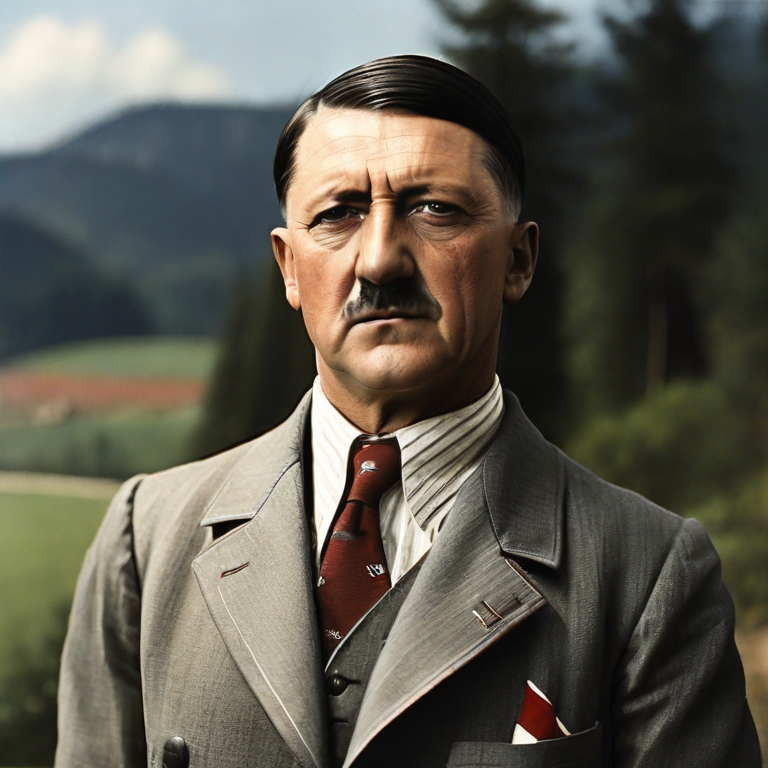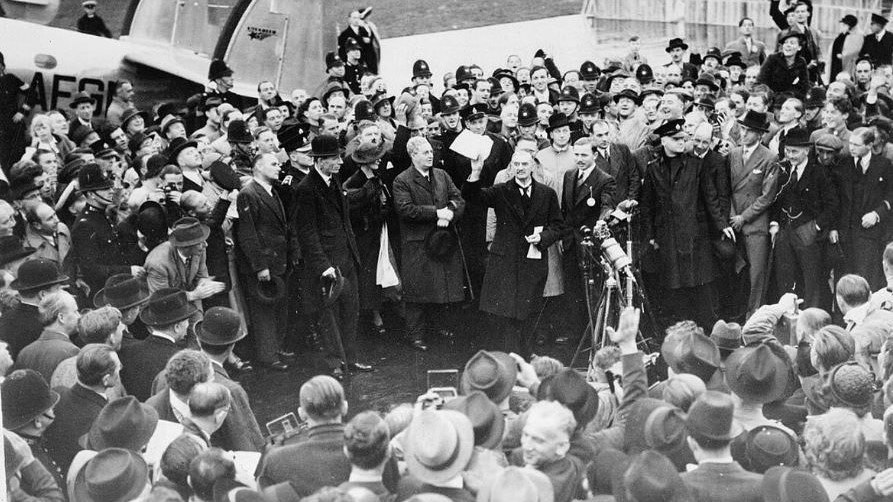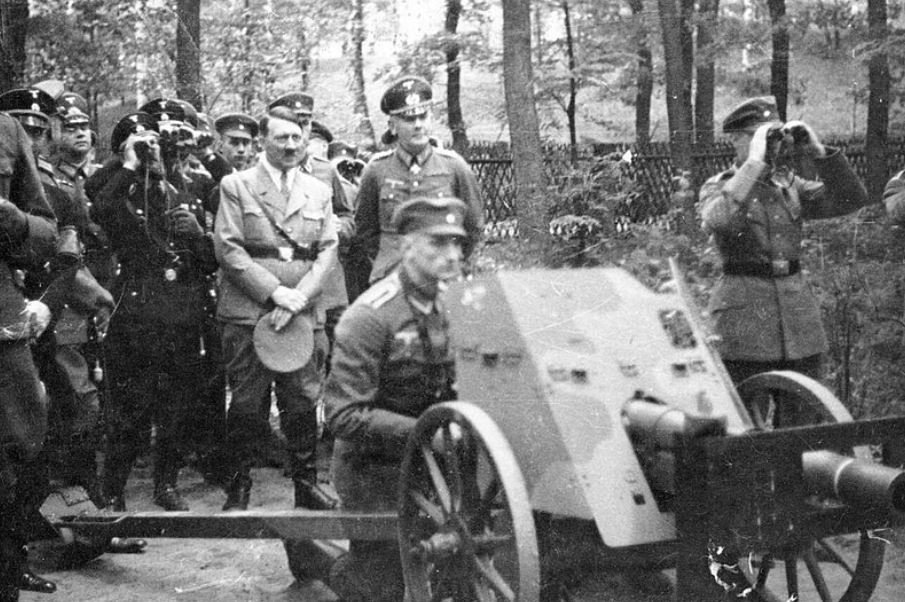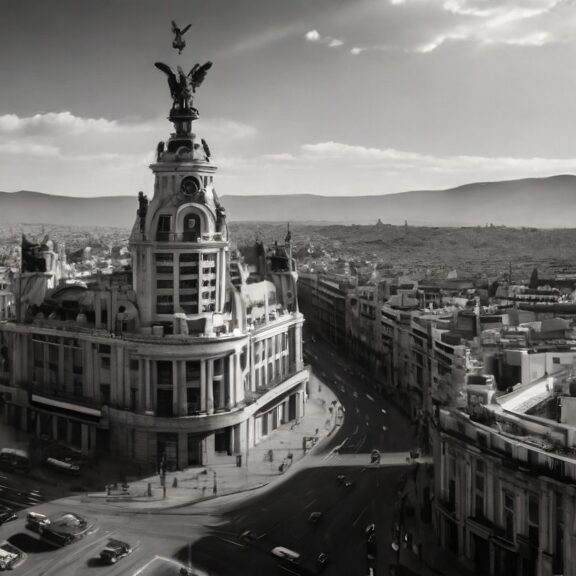Who were the main dictators of World War 2? World War 2 was the largest and deadliest global military conflict in history. It involved the major world powers of the time, resulting in over 70 million casualties. A central driver behind the war’s outbreak and course were the dictators in nations like Germany, the Soviet Union, Japan and Italy.
The authoritarian dictators and leaders that emerged in these countries during the interwar period would have an enormous impact. Their aggressive expansionist policies and military ambitions were major catalysts plunging the globe into widespread conflict.
These dictators included:
| Leader | Period in Power | Side in World War 2 | Political Type |
| Adolf Hitler | 1933-1945 | Axis (Nazi Germany) | Fascist Dictator |
| Joseph Stalin | 1924-1953 | Allied (Soviet Union) | Totalitarian Communist |
| Benito Mussolini | 1922-1943 (Executed in 1945) | Axis (Italy) | Fascist Dictator |
| Hideki Tojo | 1941-1944 (Executed in 1948) | Axis (Japan) | Military Dictator |
| Mao Zedong | 1949-1976 | Allied (China) | Communist Dictator |
| Josip Broz Tito | 1943-1980 | Partisan (Yugoslavia) | Communist Dictator |
| Getúlio Vargas | 1930-1945, 1951-1954 (Died in 1954) | Initially Neutral, Allied (Brazil) | Authoritarian Dictator |
| Ion Antonescu | 1940-1944 (Executed in 1946) | Axis (Romania) | Military Dictator |
| Francisco Franco | 1939-1975 | Neutral (Spain) | Fascist Dictator |
In this article, we explore the backgrounds, war policies and legacies of these dictators of World War 2.
1. Adolf Hitler – Germany
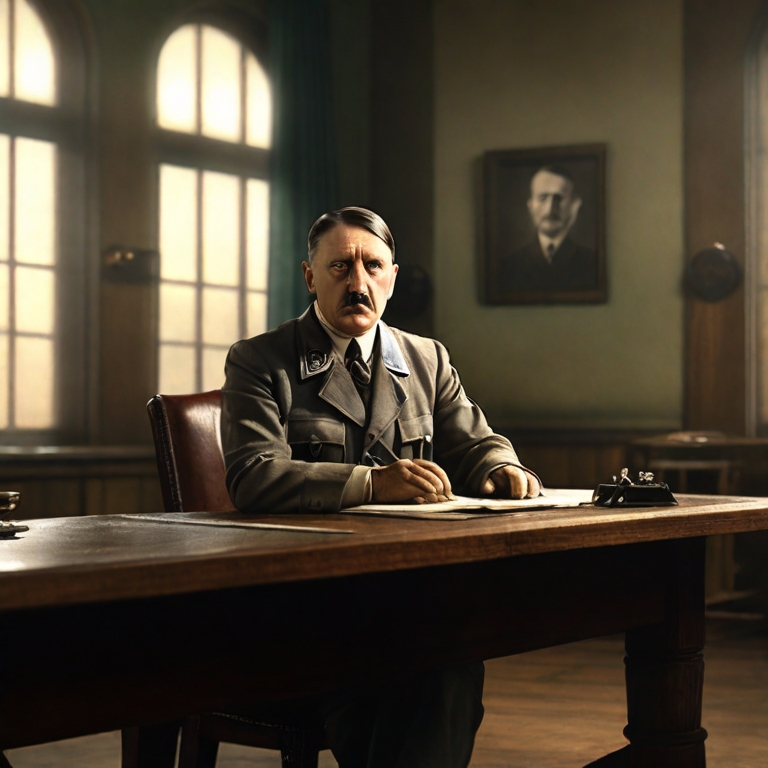
Early life and rise to power
Adolf Hitler was born on April 20, 1889, in Braunau am Inn, Austria-Hungary (now Austria).
His early life was marked by struggles, as he faced financial difficulties and the death of his younger brother. Hitler showed an early interest in art, but his application to the Vienna Academy of Fine Arts was rejected. He later moved to Munich, Germany, in 1913.
During World War I, Hitler served as a soldier and was wounded twice.
The war deeply influenced him, and he developed a strong sense of nationalism and anti-Semitic views.
After the war, Hitler joined the German Workers’ Party (DAP), which later became the National Socialist German Workers’ Party (NSDAP), or the Nazi Party. His powerful oratory skills and ability to appeal to disenchanted Germans played a crucial role in his rise within the party.
In 1933, Hitler was appointed Chancellor of Germany by President Paul von Hindenburg, and he quickly consolidated power, transforming the Weimar Republic into a totalitarian state.
Nazi ideology and expansionist policies
Hitler’s Nazi ideology was characterized by extreme nationalism, anti-Semitism, anti-communism, and a belief in Aryan racial superiority.
The Nazis implemented discriminatory laws against Jews and other minority groups, leading to widespread persecution and ultimately culminating in the Holocaust.
Hitler pursued aggressive expansionist policies, aiming to overturn the Treaty of Versailles and establish a Greater German Empire. The annexation of Austria (Anschluss) in 1938 and the occupation of Czechoslovakia were early steps toward his territorial ambitions. The invasion of Poland in 1939 marked the beginning of World War 2, as Britain and France declared war on Germany.
The subsequent years saw the rapid conquest of much of Europe by Nazi Germany, including the Blitzkrieg tactics used in the invasions of France, Belgium, the Netherlands, and other countries.
Legacy and impact on history
Adolf Hitler’s legacy is one of infamy and horror. His leadership resulted in the deaths of millions during World War 2, including the genocide of six million Jews in the Holocaust. The war had devastating consequences for Europe and the world, leading to widespread destruction and loss of life.
Hitler’s ideological beliefs and actions continue to be studied and condemned, serving as a stark reminder of the dangers of extremism and totalitarianism.
The Nuremberg Trials held after the war sought to hold Nazi leaders accountable for war crimes and crimes against humanity.
Hitler’s impact on history is profound, as he remains a symbol of tyranny, hatred, and the consequences of unchecked power.
2. Joseph Stalin – Soviet Union
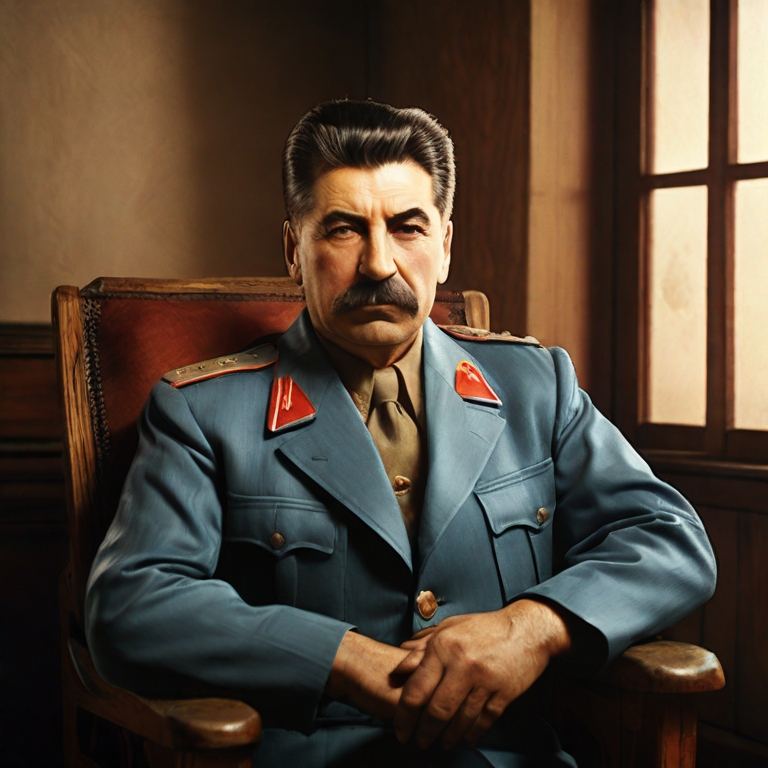
Stalin’s leadership in the Soviet Union
Joseph Stalin rose to power in the Soviet Union after the death of Vladimir Lenin in 1924.
Stalin, known for his ruthlessness, implemented policies that transformed the Soviet Union into an industrial and military powerhouse.
The First Five-Year Plan (1928-1932) focused on rapid industrialization, collectivization of agriculture, and the suppression of political opposition.
Stalin’s leadership was marked by purges, political repression, and the creation of a cult of personality around him. His was a campaign of political repression and persecution that took place in the Soviet Union from 1936 to 1938. During the Great Purge, an estimated 750,000 to 1.5 million people were executed, and many more were sent to labor camps.
During World War 2, Stalin played a crucial role in leading the Soviet Union against Nazi Germany. The Soviet Union, initially part of the Molotov-Ribbentrop Pact with Germany, later became a key Allied power after the German invasion in 1941.
In 1939, Stalin signed the Molotov-Ribbentrop Pact with Nazi Germany, a non-aggression treaty that also secretly divided Eastern Europe into spheres of influence. This pact allowed Hitler to launch his military campaigns without fear of Soviet intervention.
However, in 1941, Germany broke the pact and invaded the Soviet Union in Operation Barbarossa. This event marked the beginning of the Eastern Front in World War 2.
Stalin’s role on the Eastern Front
Stalin’s leadership during the early stages of Operation Barbarossa was marked by initial setbacks and losses. However, he played a critical role in the defense of the Soviet Union.
The Battle of Stalingrad (1942-1943) marked a turning point in the war, where Soviet forces successfully halted the German advance and began pushing the invaders back.
The Eastern Front witnessed some of the bloodiest battles in history, and Stalin’s determination and strategic decisions contributed to the Soviet victory.
Post-war Soviet influence in Eastern Europe
As Allied forces advanced towards Germany, the Soviet Union occupied Eastern Europe, leading to the establishment of pro-Soviet governments in the liberated territories.
This laid the groundwork for the division of Europe into Soviet and Western spheres of influence during the Cold War. Stalin’s influence extended to the creation of satellite states, such as East Germany, Poland, Czechoslovakia, Hungary, and others, forming the Eastern Bloc.
Stalin’s post-war policies also included the establishment of a buffer zone of friendly states to protect the Soviet Union from potential future invasions. This division of Europe contributed to the ideological and political tensions that characterized the Cold War between the United States and its allies and the Soviet Union and its satellite states.
Stalin’s leadership, while instrumental in the Soviet victory against Nazi Germany, was also marked by authoritarianism, political repression, and the establishment of a totalitarian state that had a lasting impact on the Soviet Union and the geopolitical landscape of the post-war era.
However it is estimated that Stalin was responsible for the deaths of 20 to 40 million people during his time in power.
3. Benito Mussolini – Italy
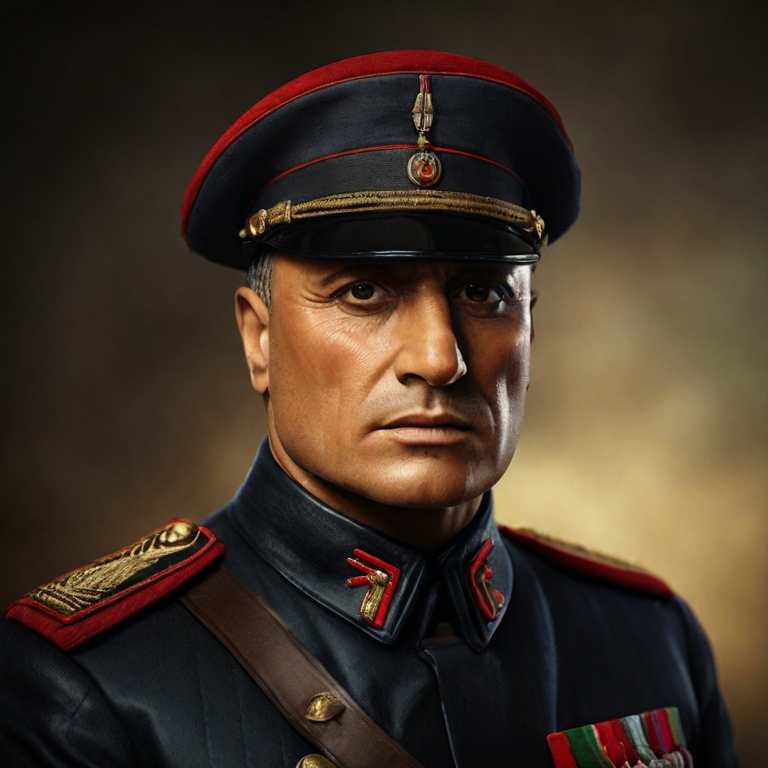
Mussolini’s fascist regime in Italy
Benito Mussolini, the founder of Italian Fascism, came to power in Italy in 1922.
Mussolini’s fascist regime was characterized by authoritarianism, nationalism, and the suppression of political opposition. He centralized power in the hands of the state, abolished political parties, and established a one-party rule.
The Fascist government sought to create a totalitarian state that controlled all aspects of public and private life.
Mussolini’s regime implemented corporatist economic policies and aimed to revive Italy’s imperial glory, drawing inspiration from ancient Rome.
Alliance with Hitler and Japan in the Axis powers
In the 1930s, Mussolini pursued an alliance with Nazi Germany under Adolf Hitler and Imperial Japan, forming the Axis powers.
The Rome-Berlin Axis, established in 1936, marked the strengthening of ties between Fascist Italy and Nazi Germany.
The following year, Italy joined Germany in supporting Francisco Franco’s Nationalists during the Spanish Civil War.
In 1940, Italy officially entered World War 2 on the side of the Axis powers, aiming to expand its territorial holdings in Africa and the Mediterranean.
Italy’s involvement in the war and ultimate downfall
Italy’s military involvement in World War 2 was marked by a series of military failures.
The invasion of Greece in 1940 ended in defeat, and Italian forces faced challenges in North Africa.
In 1943, facing numerous setbacks, Italy experienced internal unrest and a loss of support for Mussolini’s leadership.
Mussolini was arrested in July 1943, and Italy signed an armistice with the Allies in September 1943.
The Germans responded by occupying northern Italy and rescuing Mussolini, who then established the Italian Social Republic in the north, a puppet state under German control.
However, as the Allies advanced, Mussolini’s regime collapsed, and he was captured by Italian partisans in April 1945.
Mussolini’s legacy in Italy
Benito Mussolini’s legacy in Italy is complex and controversial.
While he initially enjoyed popularity for his role in establishing order and stability, his aggressive foreign policy and alliance with Hitler led Italy into disastrous military campaigns. The collapse of the fascist regime and Italy’s ultimate defeat in World War 2 tarnished Mussolini’s image.
After the war, Mussolini’s body was hung in public, symbolizing the rejection of fascism and its consequences for Italy.
The legacy of Mussolini continues to be a subject of debate in Italy, with some acknowledging certain aspects of his early policies, such as infrastructure development, while condemning the broader impact of his fascist rule, militarism, and alliance with Nazi Germany. Mussolini’s legacy remains a cautionary tale about the dangers of authoritarianism and aggressive nationalism.
4. Hideki Tojo – Japan
Tojo’s rise to power in Japan
Hideki Tojo was born on December 30, 1884, in Tokyo, Japan. He joined the Japanese Army and rose through the ranks, becoming a general in 1934.
Tojo’s rise to power was marked by his appointment as Prime Minister of Japan in October 1941. He held this position concurrently with his role as Minister of War, giving him significant influence over both the political and military aspects of the Japanese government.
Tojo assumed the position of Prime Minister during a period of increasing militarization and expansionist policies in Japan.
Japan’s militaristic expansion in Asia
During the 1930s, Japan pursued an aggressive policy of territorial expansion in Asia. The invasion of Manchuria in 1931 and subsequent conflicts, such as the Second Sino-Japanese War (1937-1945), were part of Japan’s broader strategy to establish a Greater East Asia Co-Prosperity Sphere.
This expansionist policy aimed to secure resources and create a self-sufficient economic bloc under Japanese dominance.
The militaristic approach contributed to strained relations with the United States and other Western powers, leading to Japan’s isolation diplomatically and eventually its entry into World War 2.
Tojo’s role in the attack on Pearl Harbor
On December 7, 1941, Japanese forces launched a surprise attack on the U.S. naval base at Pearl Harbor in Hawaii.
Tojo played a central role in planning and approving the attack, which aimed to cripple the U.S. Pacific Fleet and remove the perceived threat to Japan’s expansion in the Pacific. The attack on Pearl Harbor resulted in the United States entering World War 2.
Tojo’s decision to attack Pearl Harbor had significant consequences, as it not only initiated the Pacific theater of World War 2 but also led to Japan’s involvement in a wider conflict against the Allies.
Tojo’s trial and execution after the war
After Japan’s surrender in 1945, Tojo was arrested by Allied forces and brought to trial for war crimes.
The International Military Tribunal for the Far East, commonly known as the Tokyo Trials, charged Tojo and other high-ranking Japanese officials with crimes against peace, war crimes, and crimes against humanity.
Tojo was found guilty on multiple counts, including waging wars of aggression, and was sentenced to death.
On December 23, 1948, Hideki Tojo was executed by hanging. His trial and execution marked the end of an era for Japan and represented the efforts of the international community to hold individuals accountable for their roles in initiating and conducting aggressive wars and committing atrocities during World War 2.
5. Mao Zedong – China
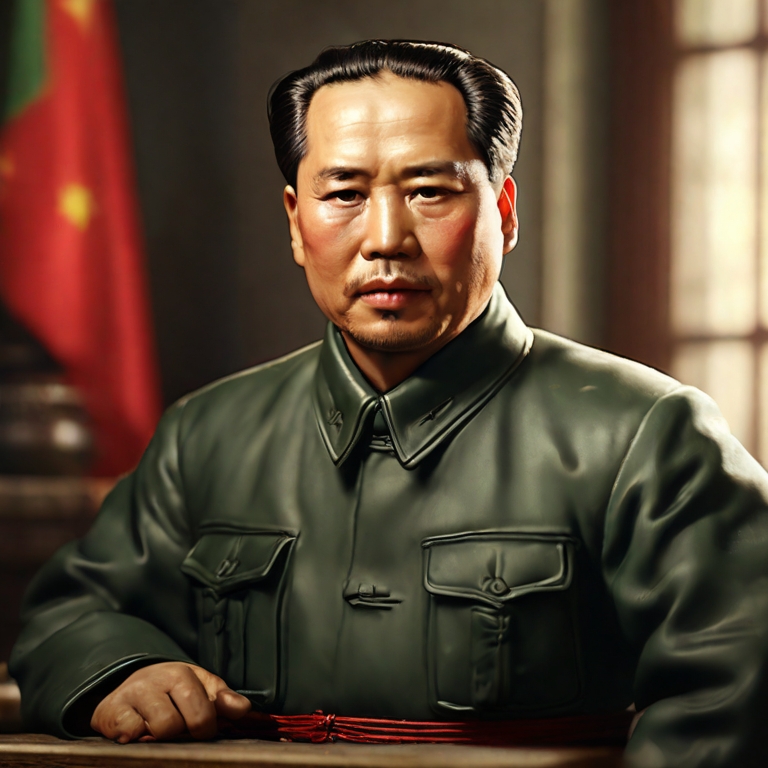
Mao’s rise to power
Mao Zedong was born in Shaoshan, Hunan province, China, in 1893. He was the son of a wealthy peasant family. Mao attended school in Changsha, the provincial capital, and became involved in revolutionary activities while still a student.
In 1921, Mao joined the Chinese Communist Party (CCP) and quickly rose through the ranks of the party, and by 1935 he was the CCP’s leader.
In 1934-1935, Mao led the CCP on the Long March, a 6,000-mile retreat from the Kuomintang (KMT), the Chinese Nationalist Party. The Long March was a grueling journey, but it helped to strengthen the CCP and to establish Mao’s leadership.
In 1949, the CCP defeated the KMT in the Chinese Civil War. Mao proclaimed the establishment of the People’s Republic of China (PRC) on October 1, 1949 and became the PRC’s first chairman.
Mao’s Influence during World War 2
During World War 2, Mao and the CCP allied with the United States and the Soviet Union against Japan. However, Mao also used the war to expand the CCP’s power and influence in China.
The CCP controlled large areas of rural China during the war, and Mao’s forces fought against both the Japanese and the KMT.
The CCP also used the war to recruit new members and to build up its military strength.
By the end of the war, the CCP was much stronger than it had been at the beginning. Mao was now in a position to challenge the KMT for control of all of China.
Mao’s Legacy
Mao Zedong’s legacy is complex and controversial.
He is revered by many Chinese people as the father of modern China, but he is also reviled by others for his brutality and his crimes against humanity.
Mao Zedong was responsible for the deaths of millions of people during his time in power. His atrocities include:
- The Great Leap Forward: This was a disastrous economic campaign that resulted in the deaths of an estimated 30 to 45 million people.
- The Cultural Revolution: This was a decade-long campaign of political and social upheaval that resulted in the deaths of an estimated 1.5 to 2 million people.
- The Anti-Rightist Campaign: This was a purge of intellectuals and other perceived enemies of the state that resulted in the deaths of an estimated 500,000 to 1 million people.
Mao’s transformed China from a poor and backward country into a major world power. Mao’s legacy is still debated today. Some people in China believe that he was a great leader who made China a stronger and more prosperous country. Others believe that he was a ruthless dictator who caused untold suffering and destruction.
6. Josip Broz Tito – Yugoslavia
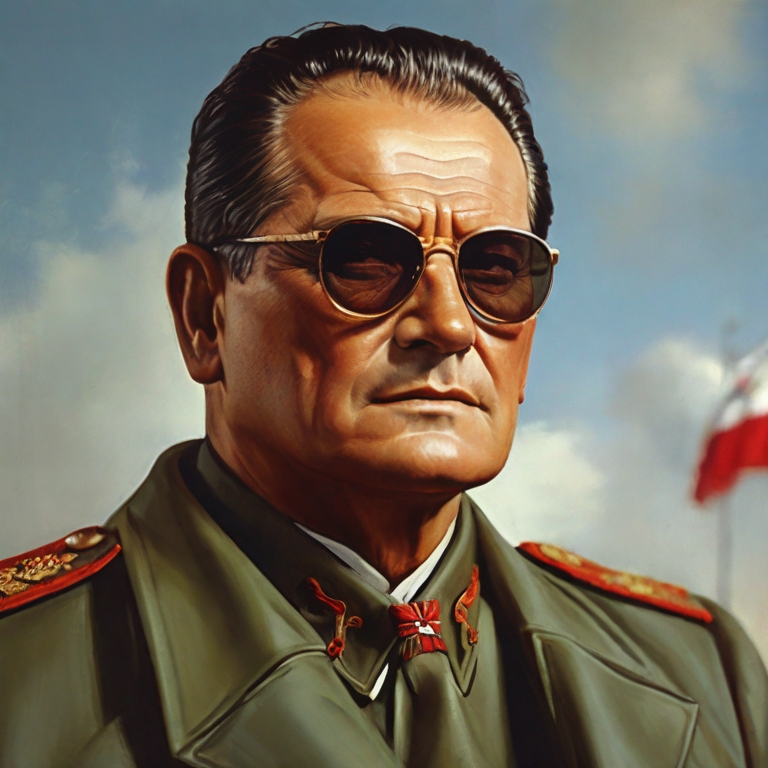
Tito’s leadership during World War 2
Josip Broz Tito, born on May 7, 1892, in what is now Croatia, played a crucial role in leading the Partisan resistance against Axis occupiers during World War 2.
Tito, a Yugoslav revolutionary and military leader, emerged as the head of the Communist-led Partisans, a diverse coalition of resistance forces fighting against Nazi German, Italian, and other Axis occupation forces in Yugoslavia.
Under Tito’s leadership, the Partisans engaged in a relentless and effective guerrilla campaign against Axis forces in Yugoslavia. They conducted sabotage operations, ambushes, and partisan warfare, creating a significant challenge for the occupying forces. The Partisans were known for their commitment to a multi-ethnic and inclusive resistance, bringing together individuals from different ethnic backgrounds and political ideologies in the common goal of liberating Yugoslavia.
The Partisans’ efforts, supported by Allied air drops and supplies, gradually weakened the Axis presence in Yugoslavia, leading to the liberation of the country by the Partisans in 1945.
Tito’s influence in post-war Yugoslavia
After World War 2, Josip Broz Tito became the leader of the Socialist Federal Republic of Yugoslavia, which was established as a federal state comprising six republics: Slovenia, Croatia, Bosnia and Herzegovina, Serbia, Montenegro, and Macedonia.
Tito implemented a unique model of socialism, known as “Titoism,” which aimed at creating a socialist state with a decentralized economic system.
The Yugoslav system incorporated worker self-management, allowing workers to have a say in the decision-making processes of their enterprises. Tito also emphasized the importance of national unity, seeking to balance the diverse ethnic and cultural identities within Yugoslavia.
Tito’s non-aligned foreign policy allowed Yugoslavia to maintain a degree of independence from both the Eastern and Western blocs during the Cold War. This independence, however, came at the cost of strained relations with the Soviet Union.
Josip Broz Tito remained the leader of Yugoslavia until his death on May 4, 1980. Following his death, Yugoslavia faced internal challenges, leading to the eventual breakup of the country in the 1990s.
Titoism left a lasting legacy, influencing debates on socialism, self-management, and multi-ethnic unity in the region.
7. Getúlio Vargas – Brazil
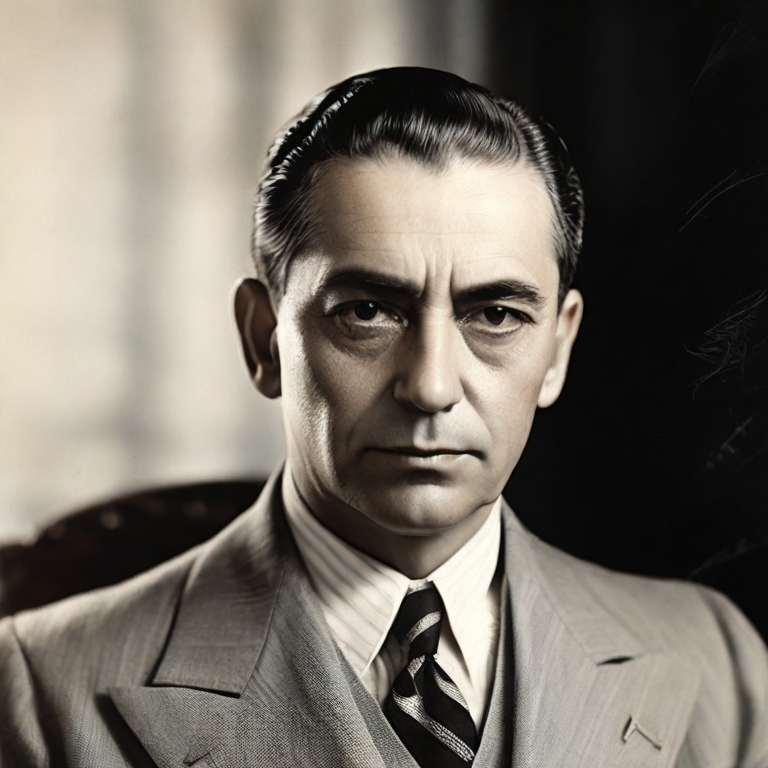
Vargas’s political career in Brazil
Getúlio Vargas, born on April 19, 1882, in São Borja, Brazil, had a long and influential political career in the country.
He first rose to prominence as the Governor of the southern state of Rio Grande do Sul in the 1920s.
Vargas gained national attention in 1930 when he led a coup that toppled the government of President Washington Luís, leading to the end of the Old Republic era.
Vargas then assumed the presidency in 1930, marking the beginning of his significant impact on Brazilian politics. He held power from 1930 to 1945 and again from 1951 until his death in 1954.
Authoritarian rule during the Estado Novo period
In 1937, facing political instability, Vargas implemented a new constitution and established the Estado Novo (New State) period, characterized by authoritarian rule.
During this time, Vargas concentrated power in the executive branch, dissolved the existing political parties, and censored the press. The Estado Novo era lasted until 1945, marked by restrictions on civil liberties and a centralized state apparatus.
Vargas justified his authoritarian measures by emphasizing the need for stability and economic development.
Despite the authoritarian nature of his rule, Vargas also implemented social welfare policies and labor reforms, which endeared him to certain segments of the population.
Brazil’s involvement in World War 2 and alliance with the Allies
During World War 2, Vargas initially pursued a policy of neutrality but later aligned Brazil with the Allies in 1942.
The sinking of Brazilian merchant ships by German submarines and pressure from the United States prompted Vargas to declare war on the Axis powers in 1942.
Brazil contributed troops to the Allied war effort and played a role in the Battle of the Atlantic and the Italian campaign.
Brazil’s involvement in World War 2 had a significant impact on its geopolitical standing, and the country emerged from the conflict with increased diplomatic influence.
Vargas’s legacy in Brazilian politics
After a brief period of exile following his ousting in 1945, Vargas returned to power through democratic means and was elected president again in 1951. However, facing political and economic challenges, as well as allegations of corruption, he resigned in 1954.
On August 24, 1954, faced with growing political turmoil and a military revolt, Vargas took his own life.
His legacy is marked by both praise for his developmental policies and criticism for the authoritarian methods used during his rule. The period of Estado Novo and Brazil’s alignment with the Allies in World War 2 are key chapters in Vargas’s legacy.
8. Ion Antonescu – Romania
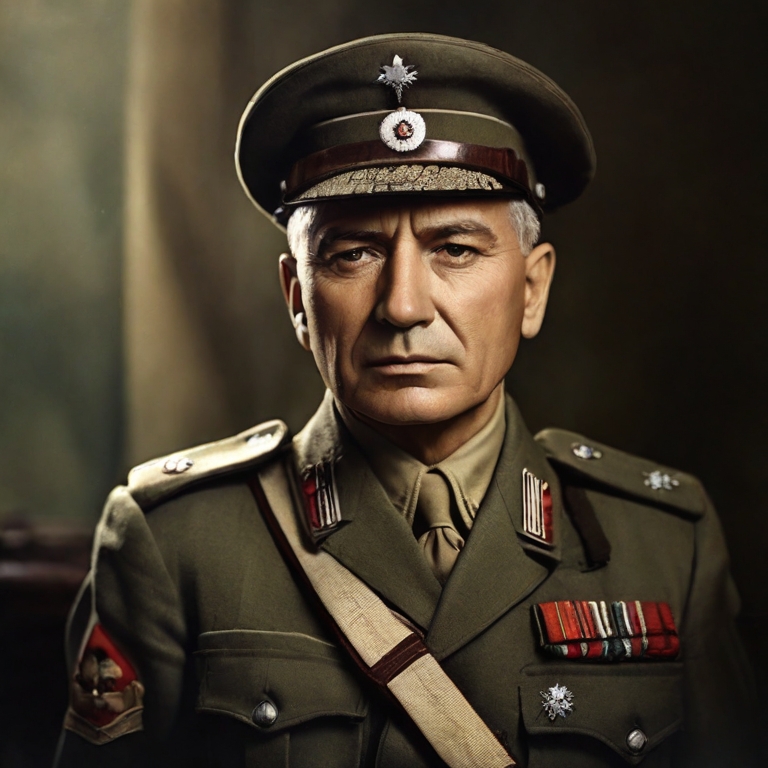
Antonescu’s leadership in Romania
Ion Antonescu, born on June 15, 1882, in Romania, was a military and political figure who rose to prominence in the 1930s.
In 1940, during a period of political turmoil and territorial changes in Eastern Europe, Antonescu became the Prime Minister of Romania. Shortly afterward, in 1941, he assumed the additional role of Conducător (Leader) with dictatorial powers.
Antonescu’s leadership was characterized by authoritarianism and collaboration with Nazi Germany.
He implemented domestic policies that were aligned with fascist and anti-Semitic ideologies, leading to the persecution of Jews and political opponents.
Romania’s alliance with the Axis powers
In 1940, Romania, under Antonescu’s leadership, joined the Axis powers by signing the Tripartite Pact, aligning itself with Nazi Germany and Fascist Italy.
This alliance was partly driven by Romania’s desire to regain territories lost to the Soviet Union and Hungary.
Antonescu’s government actively participated in the invasion of the Soviet Union alongside German forces in 1941, hoping to reclaim Bessarabia and northern Bukovina.
Romania’s alliance with the Axis powers had significant consequences, as it became involved in the Eastern Front of World War 2, facing both the Soviet Union and later the Allied forces.
Switching sides and Romania’s later involvement with the Allies
As the tide of war shifted against the Axis powers, Romania faced the advancing Soviet forces.
In August 1944, in response to the changing circumstances, King Michael I of Romania, with the support of some military and political figures, staged a coup against Antonescu. The coup resulted in Romania switching sides and aligning with the Allies.
Romanian forces then joined the Soviet Union and other Allied powers in the fight against Nazi Germany. This change in allegiance came at a crucial time in the war and had a significant impact on the Eastern Front.
Antonescu’s post-war fate
Following the coup and Romania’s switch to the Allied side, Ion Antonescu was arrested and later faced trial for war crimes and crimes against peace.
The People’s Tribunal in Bucharest found him guilty of collaborating with the Nazis and participating in the Holocaust. On June 1, 1946, Ion Antonescu was executed by firing squad.
He is remembered for his role in aligning Romania with the Axis powers and implementing repressive policies, although some argue that he also sought to protect Romanian interests and navigate through complex geopolitical challenges. Nevertheless, his association with fascist ideologies and collaboration with the Nazis ultimately led to his downfall and execution after World War 2.
9. Francisco Franco – Spain
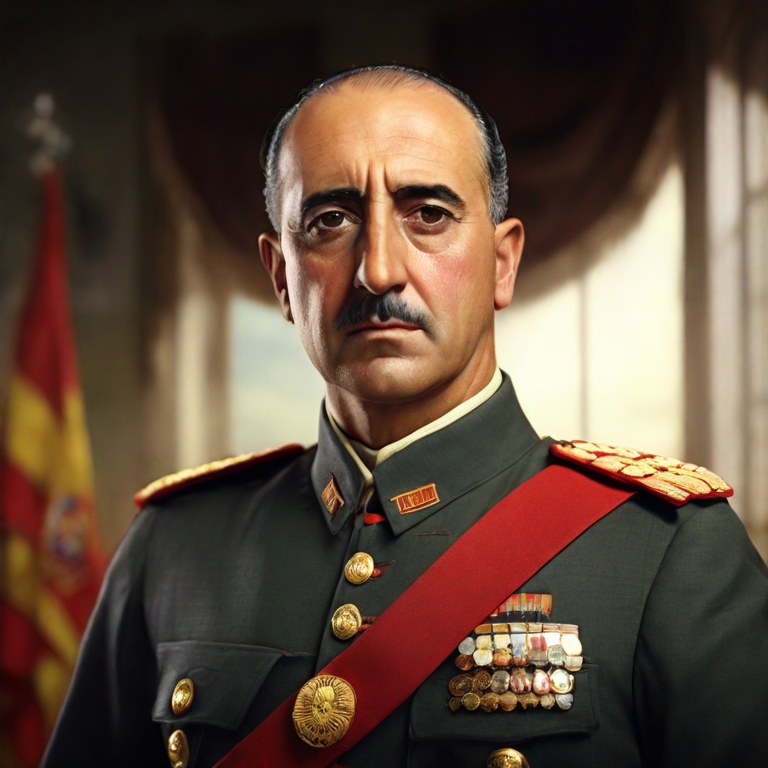
Franco’s rise to power in Spain
Francisco Franco, born on December 4, 1892, in Ferrol, Spain, rose to power during the Spanish Civil War (1936-1939).
A career military officer, Franco emerged as the leader of the Nationalist forces, a coalition of conservative, monarchist, and fascist groups, fighting against the Republicans, who were a coalition of leftist forces.
With support from Nazi Germany and Fascist Italy, Franco’s Nationalists emerged victorious in 1939.
Following the war, Franco established a military dictatorship in Spain, ruling as Head of State until his death in 1975.
Spain’s stance of neutrality during World War 2
During World War 2, Franco pursued a policy of neutrality, despite Spain’s earlier alignment with fascist forces during the Spanish Civil War.
Despite being sympathetic to the Axis powers, Franco refrained from joining the war. Spain, still recovering from the devastation of the civil war, sought to avoid direct involvement and focused on rebuilding its economy.
Franco’s decision to remain neutral during World War 2 allowed Spain to avoid the widespread destruction and economic devastation experienced by many European countries.
While officially neutral, Franco’s Spain had elements of collaboration with the Axis powers, particularly Nazi Germany and Fascist Italy. The Spanish government provided diplomatic and logistical support to the Axis, and the Blue Division, a volunteer unit of Spanish soldiers, fought alongside the Germans on the Eastern Front against the Soviet Union. Additionally, Spain supplied Germany with crucial raw materials.
However, Franco carefully balanced his collaboration with gestures of goodwill toward the Allies, such as providing intelligence on Axis activities. This delicate balancing act allowed Spain to avoid direct military conflict while benefiting from economic and diplomatic ties with both sides.
Franco’s continued rule in Spain after the war
Following World War 2, Francisco Franco maintained his grip on power in Spain.
In 1947, he declared Spain a monarchy but retained control as a de facto dictator.
Although officially neutral during the war, Franco’s regime faced international isolation in the post-war period, particularly during the early years of the United Nations.
Franco’s rule was characterized by authoritarianism, censorship, and political repression. Spain remained politically and economically isolated from much of the international community. It was only after Franco’s death in 1975 that Spain transitioned to a constitutional monarchy and a democratic system with the establishment of a parliamentary monarchy under King Juan Carlos I.
Francisco Franco’s era is remembered for its authoritarianism, suppression of political opposition, and the enduring influence of his policies on Spain’s transition to democracy in the post-Franco period.
Final Thoughts: Dictators of World War 2
In reflecting on these dictators, we are reminded that the lessons of World War 2 are not confined to a particular era or region.
They transcend time, urging us to remain vigilant against the dangers of extremism, fostering responsible leadership, and promoting international cooperation for a more just and peaceful world.

